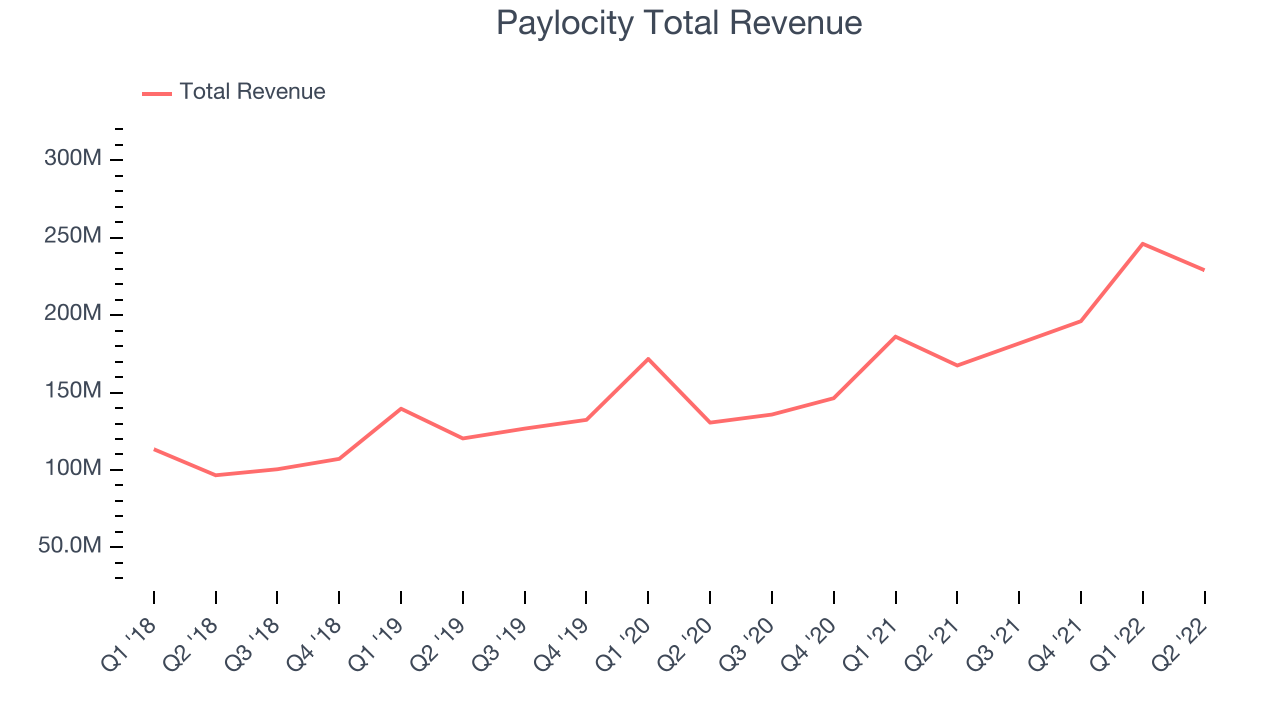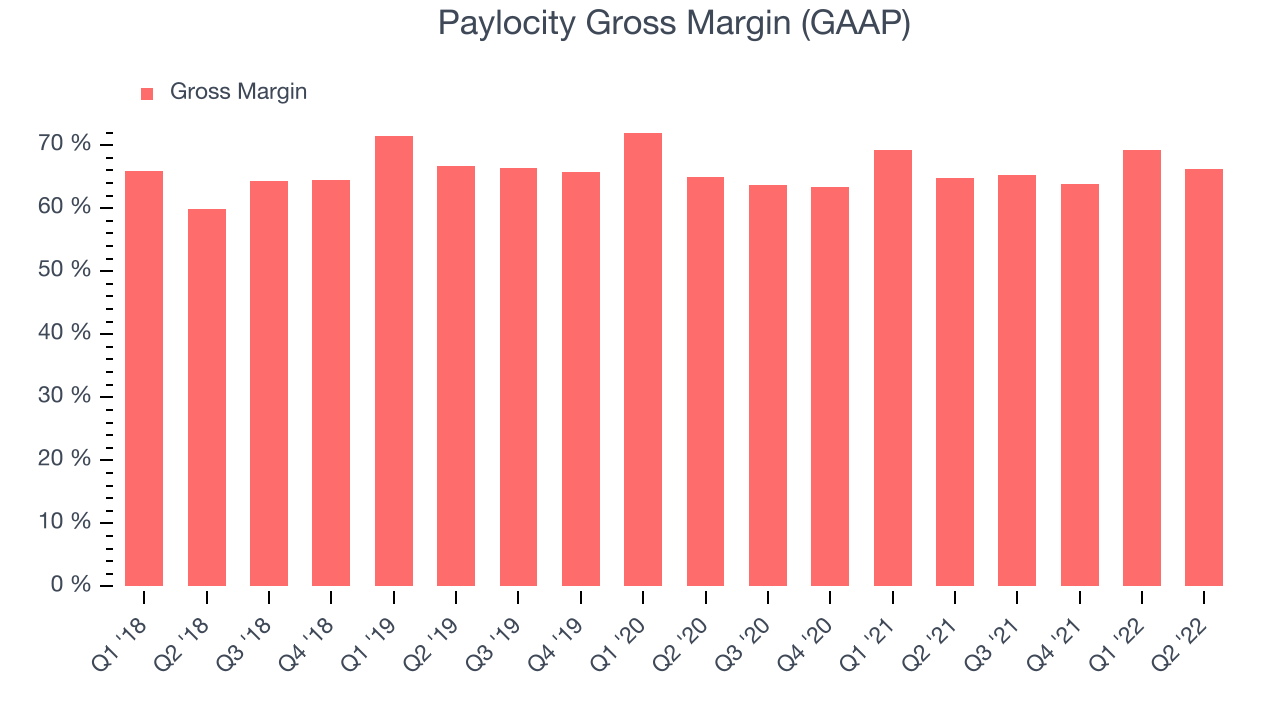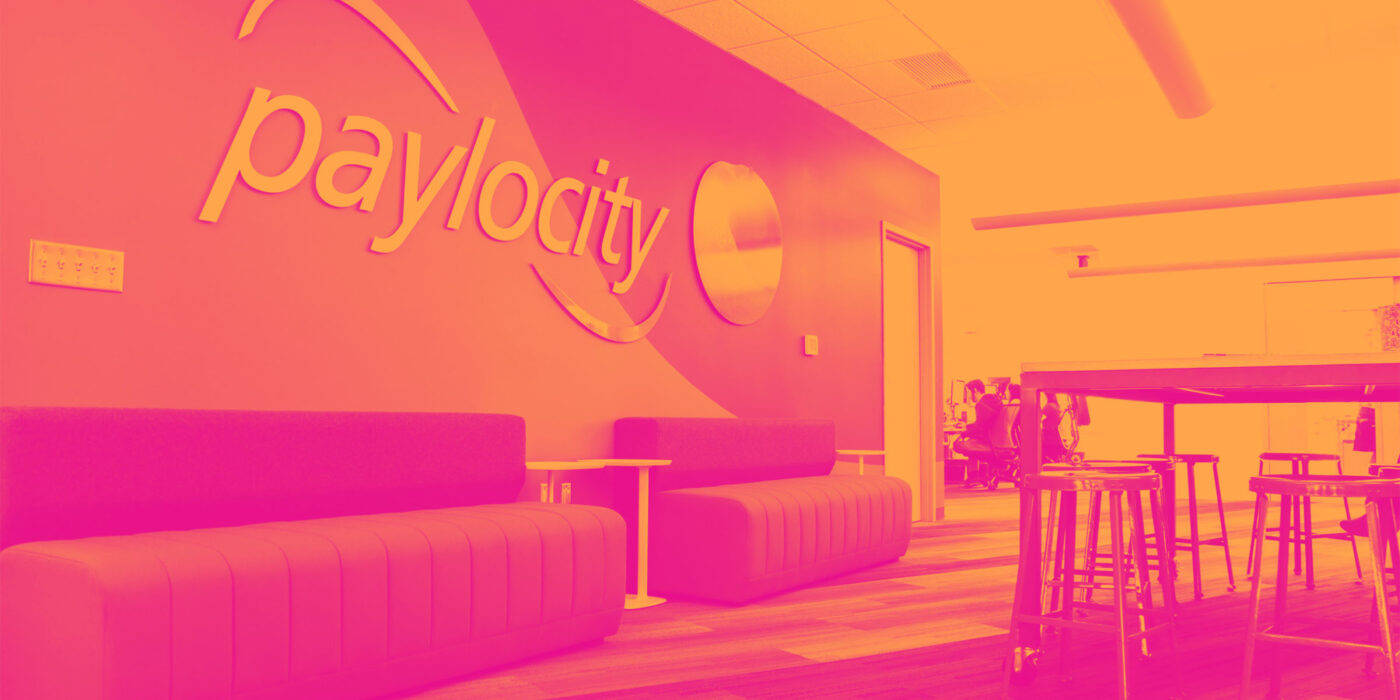Payroll and human resources software provider, Paylocity (NASDAQ:PCTY) reported Q4 FY2022 results topping analyst expectations, with revenue up 36.7% year on year to $228.9 million. On top of that, guidance for next quarter's revenue was surprisingly good, being $239.3 million at the midpoint, 5.99% above what analysts were expecting. Paylocity made a GAAP profit of $15.1 million, improving on its profit of $11.8 million, in the same quarter last year.
Is now the time to buy Paylocity? Access our full analysis of the earnings results here, it's free.
Paylocity (PCTY) Q4 FY2022 Highlights:
- Revenue: $228.9 million vs analyst estimates of $217.9 million (5.04% beat)
- EPS (non-GAAP): $0.80 vs analyst estimates of $0.53 (50.5% beat)
- Revenue guidance for Q1 2023 is $239.3 million at the midpoint, above analyst estimates of $225.7 million
- Management's revenue guidance for upcoming financial year 2023 is $1.08 billion at the midpoint, beating analyst estimates by 5.45% and predicting 27.7% growth (vs 34.1% in FY2022)
- Free cash flow of $38.7 million, down 40.7% from previous quarter
- Gross Margin (GAAP): 66.1%, up from 64.7% same quarter last year
“Recurring & other revenue grew 34% in fiscal 22 as our value proposition of providing the most modern software in the industry continues to resonate in the marketplace. Our products focused on the Modern Workforce have all seen significant increases in utilization, including Community, where monthly users has grown by more than 40% and video creation increased by over 80% in fiscal 22,” said Steve Beauchamp, Co-Chief Executive Officer of Paylocity.
Founded by payroll software veteran Steve Sarowitz in 1997, Paylocity (NASDAQ:PCTY) is a provider of payroll and human resources software for small and medium-sized enterprises.
HR software benefits from dual trends around costs savings and ease of use. First is the SaaS-ification of businesses, large and small, who much prefer the flexibility of cloud-based, web-browser delivered software paid for on a subscription basis than the hassle and expense of purchasing and managing on-premise enterprise software. Second is the consumerization of business software, whereby multiple standalone processes like payroll processing and compliance are aggregated into a single, easy to use platforms.
Sales Growth
As you can see below, Paylocity's revenue growth has been very strong over the last year, growing from quarterly revenue of $167.4 million, to $228.9 million.

And unsurprisingly, this was another great quarter for Paylocity with revenue up 36.7% year on year. But the revenue actually decreased by $17 million in Q4, compared to $49.9 million increase in Q3 2022. However, Paylocity's sales do seem to have a seasonal pattern to them, and since management is guiding for revenue to rebound in the coming quarter we wouldn't be too concerned.
Guidance for the next quarter indicates Paylocity is expecting revenue to grow 31.7% year on year to $239.3 million, in line with the 33.8% year-over-year increase in revenue the company had recorded in the same quarter last year. For the upcoming financial year management expects revenue to be $1.08 billion at the midpoint, growing 27.7% compared to 34.1% increase in FY2022.
In volatile times like these we look for robust businesses with strong pricing power. Unknown to most investors, this company is one of the highest-quality software companies in the world, and their software products have been the default standard in critical industries for decades. The result is an impressive business that is up an incredible 18,152% since the IPO. You can find it on our platform for free.
Profitability
What makes the software as a service business so attractive is that once the software is developed, it typically shouldn't cost much to provide it as an ongoing service to customers. Paylocity's gross profit margin, an important metric measuring how much money there is left after paying for servers, licenses, technical support and other necessary running expenses was at 66.1% in Q4.

That means that for every $1 in revenue the company had $0.66 left to spend on developing new products, marketing & sales and the general administrative overhead. This would be considered a low gross margin for a SaaS company and it has dropped significantly from the previous quarter, which is probably the opposite of what shareholders would like it to do.
Key Takeaways from Paylocity's Q4 Results
Sporting a market capitalization of $12.4 billion, more than $139.7 million in cash and with positive free cash flow over the last twelve months, we're confident that Paylocity has the resources it needs to pursue a high growth business strategy.
We were impressed by the very optimistic revenue guidance Paylocity provided for the next quarter. And we were also glad that the revenue guidance for the rest of the year exceeded expectations and free cash flow came in strong. On the other hand, it was less good to see the pretty significant deterioration in gross margin. Overall, we think this was a strong quarter, that should leave shareholders feeling very positive. The company is up 5.09% on the results and currently trades at $238 per share.
Should you invest in Paylocity right now? It is important that you take into account its valuation and business qualities, as well as what happened in the latest quarter. We look at that in our actionable report which you can read here, it's free.
One way to find opportunities in the market is to watch for generational shifts in the economy. Almost every company is slowly finding itself becoming a technology company and facing cybersecurity risks and as a result, the demand for cloud-native cybersecurity is skyrocketing. This company is leading a massive technological shift in the industry and with revenue growth of 70% year on year and best-in-class SaaS metrics it should definitely be on your radar.
The author has no position in any of the stocks mentioned.
